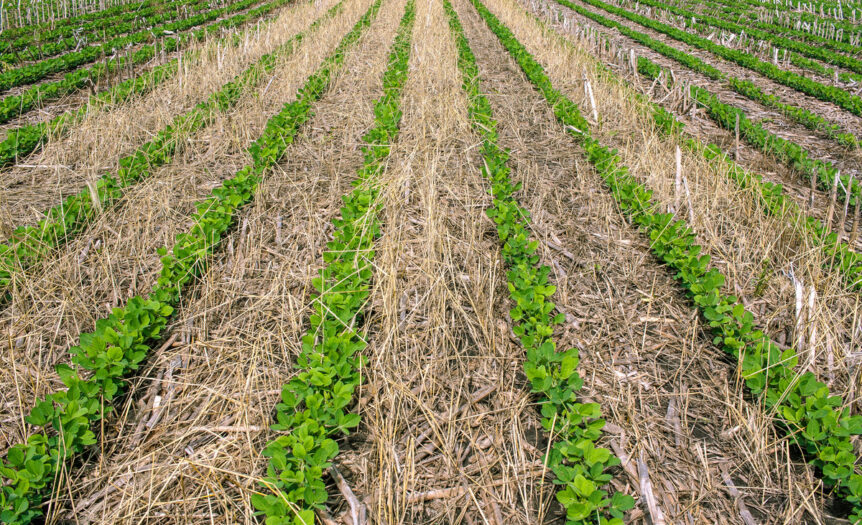Cover crops can help you enjoy success on your farm by improving soil health and preventing pests from infesting your profitable crops. However, you should not begin planting cover crops without doing your background research. Otherwise, you may make incorrect assumptions, like presuming that any growth will do. Instead, learn these important tips for planting cover crops on your farm so you can have a bountiful season.
Decide What You Want To Achieve
Planting cover crops is one of the most effective ways to improve crop growth. You can make it more effective by determining what you want to achieve with the process.
Specifically, do you want to prevent soil erosion on your land or draw in more pollinators for your plants? Once you clearly understand what you want to accomplish, you will be in a better position to choose what crop species will effectively support your farm’s unique needs.
Prepare Your Land Before Planting
Another important tip for planting cover crops on your farm is to prepare your soil beforehand. Clear away any weeds and then till the soil to improve aeration and drainage.
Additionally, consider conducting a soil test to address any nutrient deficiencies. This will ensure your cover crops have a healthy foundation for growth.
Plant Your Crops Modestly at First
When you start planting your cover crops, don’t go overboard and plant too many. Instead, ease into this strategy by starting modestly. Perform a small-scale trial to observe how your chosen crops perform in real-world conditions without committing extensive resources.
Begin with a few varieties and monitor their progress, adjusting your approach based on observations and results. This incremental method minimizes risks as you gain experience.
Ensure They Have Plenty of Time To Grow
It is also important to plant your crops early enough so they have ample time to grow. Adequate growth periods allow cover crops to develop strong root systems, contributing to soil structure and fertility. Plan your planting schedule to accommodate these needs and maximize the benefits.
Terminate Them at the Right Time
Determining the optimal time to terminate cover crops is crucial for reaping their full benefits. Early termination can prevent them from competing with subsequent crops for resources. Monitor your crops closely and terminate them when they have provided the desired soil and ecological benefits without infringing on your main crops.
Incorporating cover crops into your farming practices requires thoughtful planning and execution. By doing both, you can enjoy the advantages of cover crops and experience a very rewarding harvest.










 Deering Estate
Deering Estate
 Massage Envy South Miami
Massage Envy South Miami
 Calla Blow Dry
Calla Blow Dry
 My Derma Clinic
My Derma Clinic
 Sushi Maki
Sushi Maki
 Sports Grill
Sports Grill
 The Healthy Kitchen
The Healthy Kitchen
 Golden Rule Seafood
Golden Rule Seafood
 Malanga Cuban Café
Malanga Cuban Café

 Kathleen Ballard
Kathleen Ballard
 Panter, Panter & Sampedro
Panter, Panter & Sampedro
 Vintage Liquors
Vintage Liquors
 The Dog from Ipanema
The Dog from Ipanema
 Rubinstein Family Chiropractic
Rubinstein Family Chiropractic
 Your Pet’s Best
Your Pet’s Best
 Indigo Republic
Indigo Republic




 ATR Luxury Homes
ATR Luxury Homes


 2112 Design Studio
2112 Design Studio
 Hamilton Fox & Company
Hamilton Fox & Company
 Creative Design Services
Creative Design Services
 Best Pest Professionals
Best Pest Professionals
 HD Tree Services
HD Tree Services
 Trinity Air Conditioning Company
Trinity Air Conditioning Company
 Cisca Construction & Development
Cisca Construction & Development
 Mosquito Joe
Mosquito Joe
 Cutler Bay Solar Solutions
Cutler Bay Solar Solutions


 Miami Royal Ballet & Dance
Miami Royal Ballet & Dance
 Christopher Columbus
Christopher Columbus
 Pineview Preschools
Pineview Preschools
 Westminster
Westminster
 Carrollton
Carrollton
 Lil’ Jungle
Lil’ Jungle
 Frost Science Museum
Frost Science Museum
 Palmer Trinity School
Palmer Trinity School
 South Florida Music
South Florida Music
 Pinecrest Orthodontics
Pinecrest Orthodontics
 Dr. Bob Pediatric Dentist
Dr. Bob Pediatric Dentist
 d.pediatrics
d.pediatrics
 South Miami Women’s Health
South Miami Women’s Health

 The Spot Barbershop
The Spot Barbershop
 My Derma Clinic
My Derma Clinic




 Miami Dance Project
Miami Dance Project

 Rubinstein Family Chiropractic
Rubinstein Family Chiropractic
 Indigo Republic
Indigo Republic

 Safes Universe
Safes Universe
 Vintage Liquors
Vintage Liquors
 Evenings Delight
Evenings Delight





 Atchana’s Homegrown Thai
Atchana’s Homegrown Thai
 Baptist Health South Florida
Baptist Health South Florida

 Laser Eye Center of Miami
Laser Eye Center of Miami
 Visiting Angels
Visiting Angels
 OpusCare of South Florida
OpusCare of South Florida

 Your Pet’s Best
Your Pet’s Best





 HD Tree Services
HD Tree Services
 Hamilton Fox & Company
Hamilton Fox & Company


 Creative Design Services
Creative Design Services